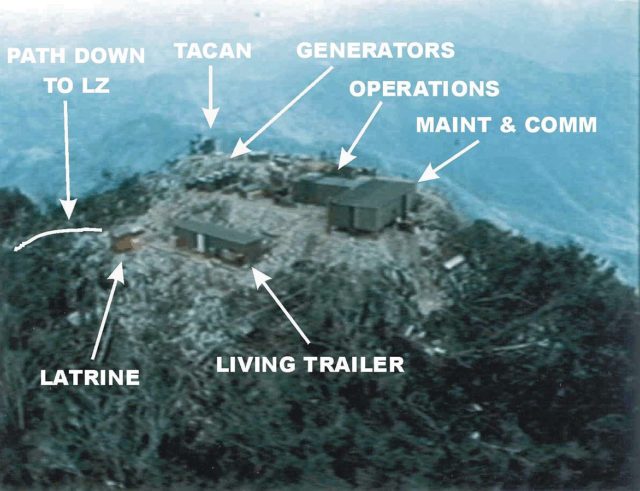There is a remote mountaintop in north-eastern Laos called Phou Phathi, and the locals said it was a place where phi, or spirits, lived. By the end of March 1968 it had claimed a few more souls, and the ghosts of the conflict would linger on in American history.
Strangely for such an important event, the Battle of Lima Site 85 was almost exclusively carried out by Central Intelligence Agency (CIA) forces and friendly soldiers from the Kingdom of Laos and the Thai Border Patrol Police.
The very fact that the battle was fought without reinforcement from American armed forces was down to the sensitive diplomatic nature of the outpost, and the fact that the whole installation was meant to remain as secretive as possible.
This area of south-east Asia was an important part of the strategy because it was one of the main gateways between North Vietnam and Laos. The communist forces used it to smuggle troops and supplies across the border into Laos, while the U.S.A. used it to conduct surveillance and support missions against North Vietnam.
And so it was against this backdrop that a Tactical Air Navigation (TACAN) station was built upon the perilous mountain of Phou Phathi, which was above Lima Site 85. However, this is where all the technicalities begin – and part of the reason why such an important strategical installation was so poorly defended.
According to the International Agreement of the Neutrality of Laos, signed in 1962, the country was neutral from the conflict. This meant that America was banned from conducting military operations in the country, and any activities undertaken by the United States Air Force (USAF) had to have approval by Ambassador William H. Sullivan, who was America’s diplomatic representative in the Kingdom.

Laotian Prime Minister Prince Souvanna Phouma allowed the TACAN station to be built, but on the condition that it could not be manned by any US military personnel. This resulted in the USAF men in the station being ‘sheep-dipped’ (stripping a soldier of his military uniform and identification so he can pose as a civilian during a covert mission.) to make them appear like civilian contractors.
In August 1966 the system was built, and then updated just one year later to provide fighters and bombers with more precise bomb release information, and was operational by November 1967. But in order to work under the diplomatic restrictions, any USAF personnel had to sign papers that temporarily released them from their military service, and they had to work pretending to be technicians from the company Lockheed Martin.
This was all just cloaks and daggers to comply with unrealistic diplomatic aims of a country that was being used as a conduit for Northern Vietnamese forces. In reality, the USAF men acted as members of the 1st Mobile Communications Group, based in Thailand, who rotated to the site every seven days.
Tasked with its defence was the CIA-funded Thai Border Patrol Police and the Hmong Clandestine Army, which was commanded by Major General Vang Pao. Because there were doubts about the General’s ability to adequately defend the installation, all of the sensitive equipment had explosives attached to it, in case the site was overrun. By the end of 1967, Lima Site 85 had become absolutely vital to the U.S. operation within the country, and it directed over 50% of all bombing done against North Vietnam.
Because of the success of the installation, it was attracting the interest of the North Vietnamese forces, who began to show ominous signs that they were preparing to launch an attack. Paved roads were constructed to take them closer to the mountain, and the person responsible for site security, Major Richard Secord, requested that all USAF personnel be evacuated or armed to avoid loss of life.
These evacuations never took place, however, because senior Government officials wanted the outpost to stay operational for as long as possible – because of its importance to the Air Force.
Continues on Page 2
The post A Fatal Failing Of Intelligent Leadership – The Battle Of Lima Site 85 appeared first on WAR HISTORY ONLINE.